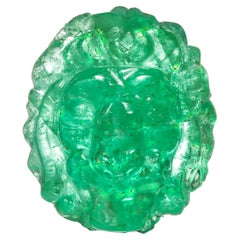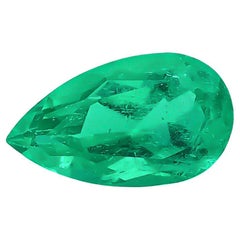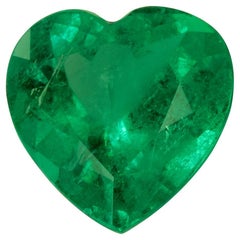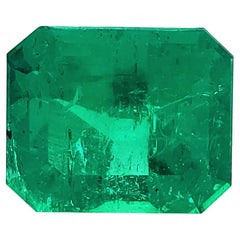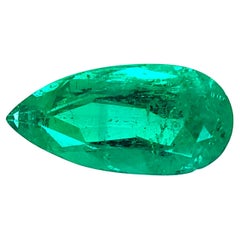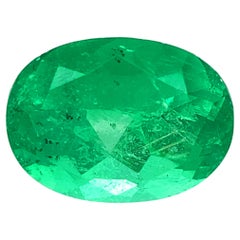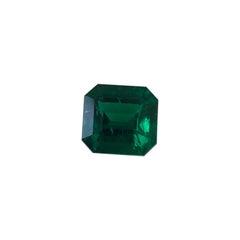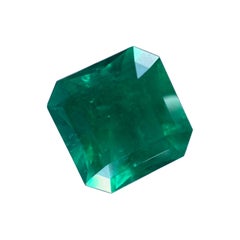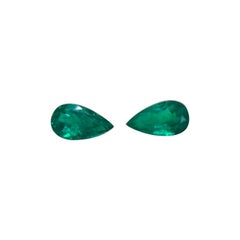Loose Colombian Emerald Stone
20th Century Colombian Contemporary Loose Gemstones
Emerald
21st Century and Contemporary Colombian Loose Gemstones
Emerald
21st Century and Contemporary Colombian Loose Gemstones
Emerald
21st Century and Contemporary Colombian Loose Gemstones
Emerald
21st Century and Contemporary Colombian Loose Gemstones
Emerald
21st Century and Contemporary Colombian Loose Gemstones
Emerald
21st Century and Contemporary Colombian Loose Gemstones
Emerald
21st Century and Contemporary Colombian Loose Gemstones
Emerald
21st Century and Contemporary Hong Kong Loose Gemstones
Emerald
21st Century and Contemporary Colombian Loose Gemstones
Emerald
21st Century and Contemporary Colombian Loose Gemstones
Emerald
21st Century and Contemporary Colombian Loose Gemstones
Emerald
21st Century and Contemporary Colombian Loose Gemstones
Emerald
21st Century and Contemporary Colombian Loose Gemstones
Emerald
21st Century and Contemporary Colombian Loose Gemstones
Emerald
21st Century and Contemporary Loose Gemstones
Emerald
21st Century and Contemporary Loose Gemstones
Emerald
21st Century and Contemporary Colombian Art Deco Loose Gemstones
Emerald
21st Century and Contemporary Colombian Loose Gemstones
Emerald
21st Century and Contemporary Unknown Art Deco Loose Gemstones
Emerald
21st Century and Contemporary Unknown Art Deco Loose Gemstones
Emerald
21st Century and Contemporary Colombian Art Deco Loose Gemstones
Emerald
21st Century and Contemporary Colombian Art Deco Loose Gemstones
Emerald
21st Century and Contemporary Hong Kong Loose Gemstones
Emerald
21st Century and Contemporary Colombian Loose Gemstones
Emerald
2010s Colombian Loose Gemstones
Emerald
Loose Colombian Emerald Stone For Sale on 1stDibs
How Much is a Loose Colombian Emerald Stone?
A Close Look at Modern Jewelry
Rooted in centuries of history of adornment dating back to the ancient world, modern jewelry reimagines traditional techniques, forms and materials for expressive new pieces. As opposed to contemporary jewelry, which responds to the moment in which it was created, modern jewelry often describes designs from the 20th to 21st centuries that reflect movements and trends in visual culture.
Modern jewelry emerged from the 19th-century shift away from jewelry indicating rank or social status. The Industrial Revolution allowed machine-made jewelry using electric gold plating, metal alloys and imitation stones, making beautiful jewelry widely accessible. Although mass production deemphasized the materials of the jewelry, the vision of the designer remained important, something that would be furthered in the 1960s with what’s known as the “critique of preciousness.”
A design fair called the “Exposition Internationale des Arts Décoratifs et Industriels Modernes” brought global attention to the Art Deco style in 1925 and gathered a mix of jewelry artists alongside master jewelers like Van Cleef & Arpels, Mauboussin and Boucheron. Art Deco designs from Cartier and Van Cleef & Arpels unconventionally mixed gemstones like placing rock crystals next to diamonds while borrowing motifs from eclectic sources including Asian lacquer and Persian carpets. Among Cartier’s foremost design preoccupations at the time were high-contrast color combinations and crisp, geometric forms and patterns. In the early 20th century, modernist jewelers like Margaret De Patta and artists such as Alexander Calder — who is better known for his kinetic sculptures than his provocative jewelry — explored sculptural metalwork in which geometric shapes and lines were preferred over elaborate ornamentation.
Many of the innovations in modern jewelry were propelled by women designers such as Wendy Ramshaw, who used paper to craft her accessories in the 1960s. During the 1970s, Elsa Peretti created day-to-night pieces for Tiffany & Co. while designers like Lea Stein experimented with layering plastic, a material that had been employed in jewelry since the mid-19th century and had expanded into Bakelite, acrylics and other unique materials.
Find a collection of modern watches, bracelets, engagement rings, necklaces, earrings and other jewelry on 1stDibs.
The Legacy of Emerald in Jewelry Design
No one liked emeralds and emerald jewelry more than Elizabeth Taylor (or her alter ego, Cleopatra). Emeralds were first discovered in Egypt around 330 BC. The stone’s name originated from the ancient Greek word for green, “smaragdus.” According to the Gemological Institute of America, “Emeralds from what is now Colombia were part of the plunder when 16th-century Spanish explorers invaded the New World. The Incas had already been using emeralds in their jewelry and religious ceremonies for 500 years. The Spaniards, who treasured gold and silver far more than gems, traded emeralds for precious metals. Their trades opened the eyes of European and Asian royalty to emerald’s majesty.”
There are numerous myths attributed to the emerald’s spiritual powers, like placing an emerald under your tongue will allow you to see the future. But be careful not to swallow the birthstone for May, or that future won’t be so bright!
There are many important (read: large) emeralds in museum collections around the world. The Patricia Emerald, named after the miner’s daughter, is a 632-carat dihexagonal (or 12-sided) crystal that was discovered in Colombia in 1920 and now resides at the American Museum of Natural History in New York. The Smithsonian Museum of Natural History in Washington has in its possession the Hooker Emerald, a 75.47-carat Colombian stone. That emerald had been acquired in the 16th or 17th century by Spanish conquistadores and shipped to Europe. It later belonged to Abdul Hamid II, Sultan of the Ottoman Empire (1876–1909), who wore it on his belt buckle. Purchased at auction by Tiffany & Co. in 1911, the Hooker Emerald was set into a tiara and featured in the New York World’s Fair “House of Jewels” exhibit in 1940. Today, it is part of a brooch, also designed by the jewelry house.
On 1stDibs, find a range of antique and vintage emerald jewelry and watches that includes emerald rings, emerald necklaces and other accessories.
Finding the Right Loose-gemstones for You
Are you shopping for diamonds and other loose gemstones to create your own custom jewelry?
Why might you purchase a diamond or gemstone “loose” — that is, on its own, not mounted in a piece of jewelry? Perhaps you’re a connoisseur looking to acquire a unique investment. The scarcity of high-quality colored diamonds, for instance, especially pink diamonds, means that their value increases over time; the same is true of rare Kashmir sapphires and Burmese rubies. Far rarer than diamonds, Paraiba tourmaline, discovered only in the 1980s, is treasured as much for its extraordinary color as its scarcity, both of which contribute to its high value.
A more common scenario would be that you’re hoping to create a very special piece of custom jewelry, such as an engagement ring or a milestone-birthday present, and want to personally select the most beautiful, unusual, or ultra-rare stone you can find and afford. Doing so adds to the romance and substance of the gift and can be a part of the story told as the jewel is passed from generation to generation.
If this sounds like you, read on for tips on becoming one of the world’s savviest gem hunters.
Educate yourself: When buying any piece of gem-set fine jewelry, you should familiarize yourself with the factors that determine a stone’s price. This will enable you to streamline your search for the perfect gem and have intelligent, productive conversations with sellers.
There is a wealth of information online, such as our diamond-buying guide and this overview of colored gemstones for engagement rings. The buying guides of the Gemological Institute of America (GIA), searchable by stone type, are also a widely trusted source for consumers venturing into the world of diamonds and gems for the first time.
Vet your vendor: If you peruse 1stDibs with any regularity, you know there is no shortage of vendors who deal in top-quality loose gemstones. (Read about our vetted sellers.) Finding a trustworthy, established dealer may be as easy as getting a recommendation from friends or family. And, although it may sound obvious, it pays to Google your candidates — and consult customer reviews — before making contact.
Harakh Mehta, designer and founder of the Mumbai, India–based fine-jewelry brand Harakh, has an innate understanding of proper client relations, especially when the customer is in unfamiliar territory. “Start chatting with the dealer, get to know them better," he says. "It’s very important to establish a comfort level. We never push a sale, as we want it to be a carefully considered purchase. So, if the client is not in a rush, we do it over a few virtual meetings or phone calls.”
Request documentation: The best dealers go to great lengths to furnish clients with documents verifying the quality rating, natural origin and provenance of a stone — showing, for example, that loose emerald hails from the famous Muzo mine in Colombia — and disclosing any treatments applied to enhance its appearance. (And who doesn't love emerald jewelry? The most valuable emeralds are the ones that have a deep bluish-green to true green color and no visible inclusions.)
If no grading report is available for a stone you are interested in, the dealer should be able to provide an authenticity document, such as an appraisal or info sheet, that has been signed by an in-house gemologist or professional appraiser. Google those names, too, for extra peace of mind.
Ask for videos and visuals: When transacting with a gem dealer online, you should always request real-time videos and photographs, since professional photos of a stone, usually on a white background, have likely been retouched for optimal presentation.
Read more about how to buy loose gemstones and find your dream gems today on 1stDibs.
